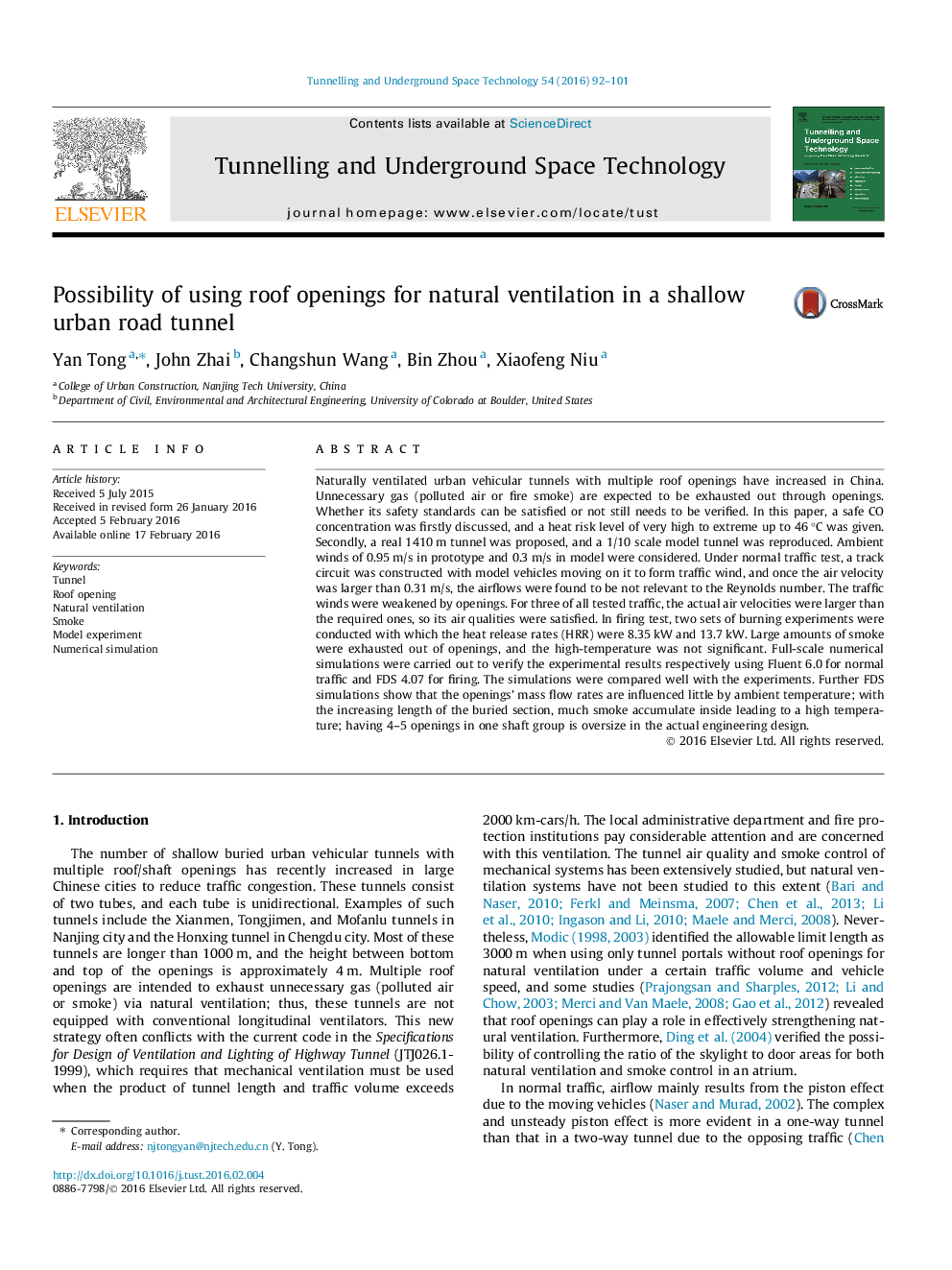| کد مقاله | کد نشریه | سال انتشار | مقاله انگلیسی | نسخه تمام متن |
|---|---|---|---|---|
| 312153 | 534186 | 2016 | 10 صفحه PDF | دانلود رایگان |
• Standards on health and fire safety are discussed respectively for traffic and firing.
• A 1/10 scaled tunnel is reproduced and experimented for normal traffic and firing.
• Experimental results are compared to that of full-scale simulations based on similarity method.
• Ambient wind plays a role of forming traffic wind and smoke spreading.
Naturally ventilated urban vehicular tunnels with multiple roof openings have increased in China. Unnecessary gas (polluted air or fire smoke) are expected to be exhausted out through openings. Whether its safety standards can be satisfied or not still needs to be verified. In this paper, a safe CO concentration was firstly discussed, and a heat risk level of very high to extreme up to 46 °C was given. Secondly, a real 1410 m tunnel was proposed, and a 1/10 scale model tunnel was reproduced. Ambient winds of 0.95 m/s in prototype and 0.3 m/s in model were considered. Under normal traffic test, a track circuit was constructed with model vehicles moving on it to form traffic wind, and once the air velocity was larger than 0.31 m/s, the airflows were found to be not relevant to the Reynolds number. The traffic winds were weakened by openings. For three of all tested traffic, the actual air velocities were larger than the required ones, so its air qualities were satisfied. In firing test, two sets of burning experiments were conducted with which the heat release rates (HRR) were 8.35 kW and 13.7 kW. Large amounts of smoke were exhausted out of openings, and the high-temperature was not significant. Full-scale numerical simulations were carried out to verify the experimental results respectively using Fluent 6.0 for normal traffic and FDS 4.07 for firing. The simulations were compared well with the experiments. Further FDS simulations show that the openings’ mass flow rates are influenced little by ambient temperature; with the increasing length of the buried section, much smoke accumulate inside leading to a high temperature; having 4–5 openings in one shaft group is oversize in the actual engineering design.
Journal: Tunnelling and Underground Space Technology - Volume 54, April 2016, Pages 92–101
